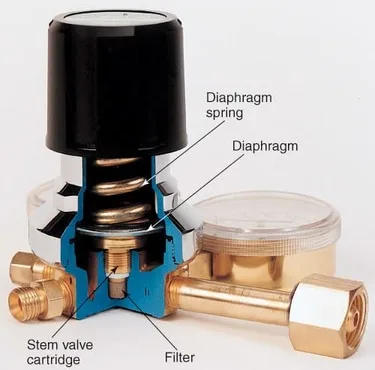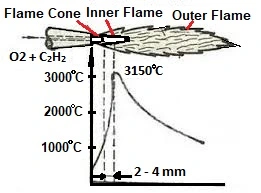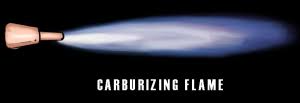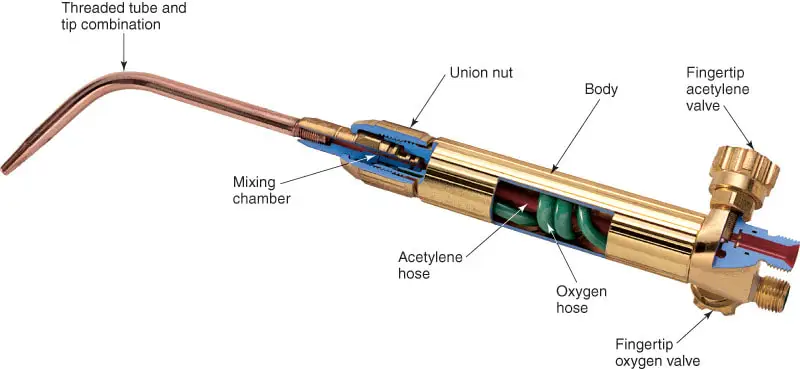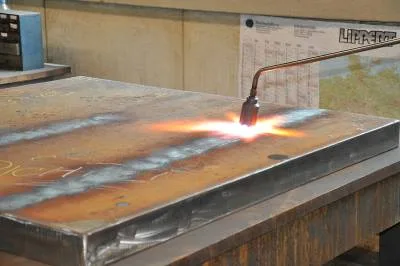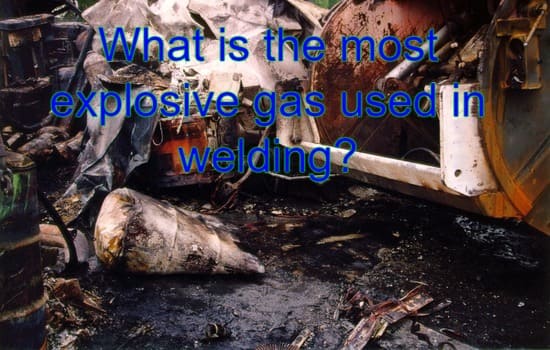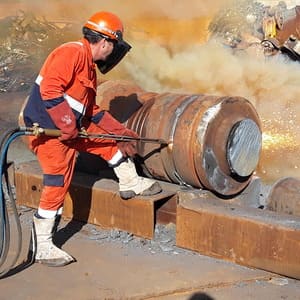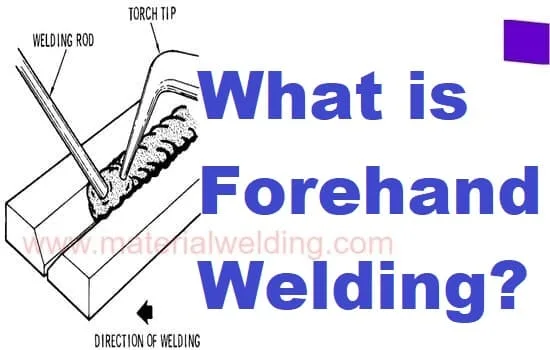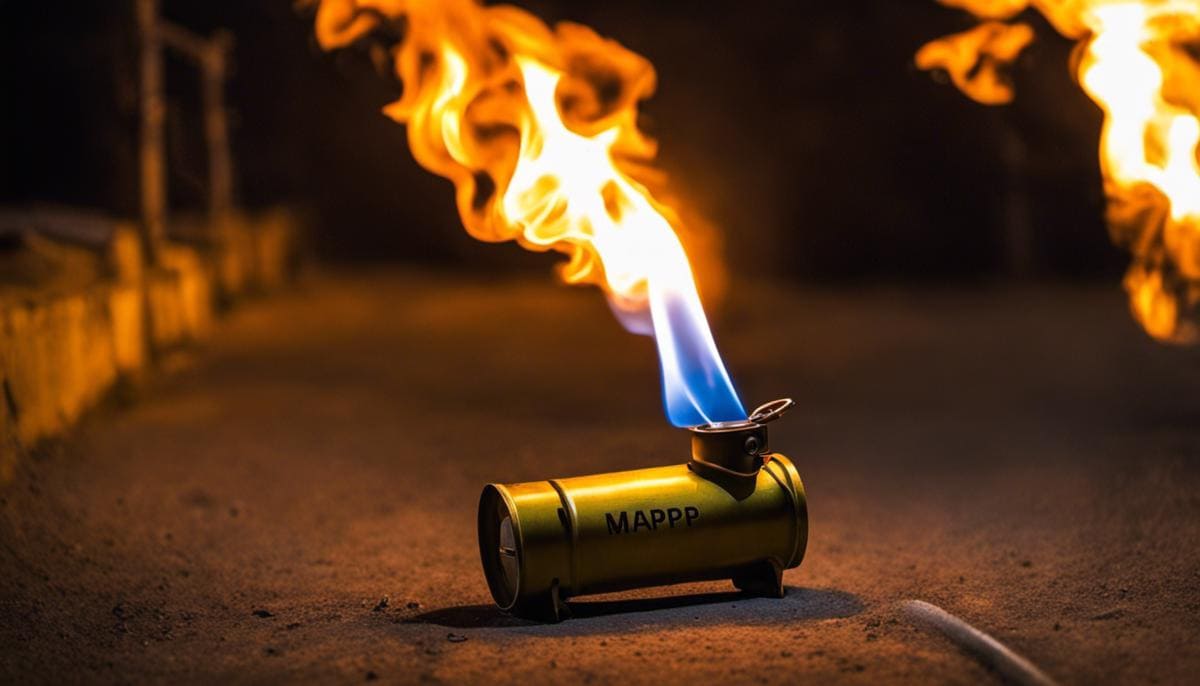What is Flash Back or Flame Arrestor?
A flashback arrestor or flame arrestor is a safety device designed to prevent the backward flow of flame into a gas cylinder or pipeline, which could potentially cause an explosion or fire. It is typically installed in the gas supply line or regulator, just upstream of the torch or burner.
A flashback or flame arrestor is installed between the torch & regulator on both acetylene and oxygen lines.
The flashback arrestor works by using a flame-resistant element to quench any flames that might try to travel back through the gas supply line. The element is typically made of sintered metal or ceramic, and is designed to allow gas to flow through it freely, but to block the passage of flame.
Applications of Flash Back or Flame Arrestor
Flashback arrestors are commonly used in applications where there is a risk of flammable gases or vapors being ignited, such as welding, cutting, or brazing operations. They are also used in other industrial processes, such as refining, chemical production, and gas storage.
How a Flash Back or Flame Arrestor works?
A flashback arrestor or flame arrestor works by using a combination of mechanical and chemical mechanisms to prevent the backward flow of flame into a gas cylinder or pipeline.

The main components of a flashback arrestor include a housing, a flame arrestor element, and a check valve. The housing is typically made of brass or stainless steel and contains the other components of the arrestor.
The flame arrestor element is typically made of sintered metal or ceramic and is positioned inside the housing. The check valve is typically located at the inlet of the arrestor and prevents the flow of gas in the wrong direction.
When gas flows through the flashback arrestor, it first encounters the check valve, which prevents gas from flowing in the wrong direction. If a flame tries to travel back up the gas supply line, it encounters the flame arrestor element, which quenches the flame by dissipating the heat and preventing it from propagating any further.
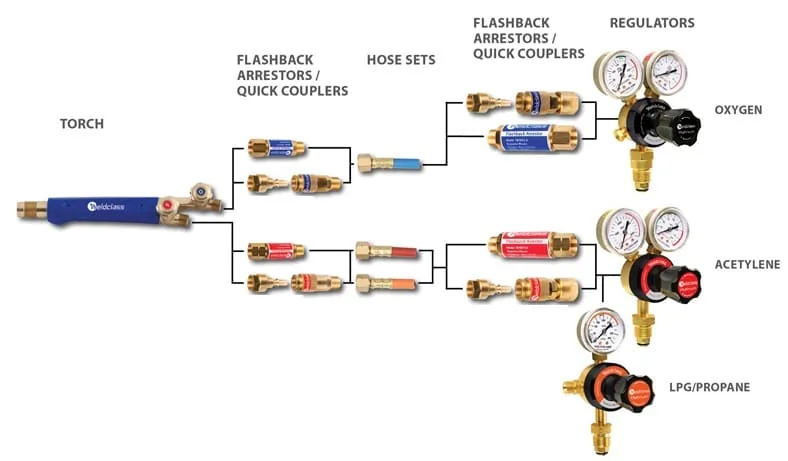
The flame arrestor element typically consists of a large number of small channels or pores, which allow gas to flow through them freely but block the passage of flame. When a flame encounters the element, it heats up the metal or ceramic material, causing it to release stored heat and cool the flame. This process is called flame quenching.
How to test flashback arrestors?
Flashback arrestors should be tested periodically to ensure that they are functioning properly and providing adequate protection against flashback and flame propagation. The specific testing requirements for flashback arrestors may vary depending on the manufacturer’s instructions and the type of arrestor.
General steps for testing flashback arrestors:
- Turn off the gas supply to the arrestor and allow the system to cool down.
- Remove the arrestor from the gas supply line and visually inspect it for any signs of damage or wear.
- Check the manufacturer’s instructions to determine the type of test required for the specific arrestor.
- Conduct a flow test by using a flowmeter or pressure gauge to measure the gas flow rate through the arrestor. Compare the results to the manufacturer’s specifications to ensure that the arrestor is not restricting the gas flow.
- Conduct a flashback test by using a spark or flame to ignite the gas at the outlet of the arrestor. Observe the flame to ensure that it does not propagate back through the arrestor.
- Reinstall the arrestor in the gas supply line and turn on the gas supply.
- Conduct a leak test to ensure that the arrestor is not leaking gas.
Are flashback arrestors required by OSHA?
OSHA’s general industry standard for welding, cutting, and brazing (29 CFR 1910.252) requires the use of flashback arrestors in both the oxygen and fuel gas supply lines for all welding and cutting operations. This applies to both manual and automatic torches.
OSHA’s construction standard for welding, cutting, and brazing (29 CFR 1926.350) also requires the use of flashback arrestors for welding and cutting operations, but only in the oxygen supply line.
